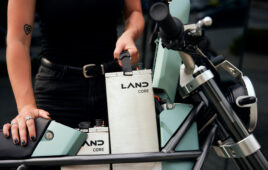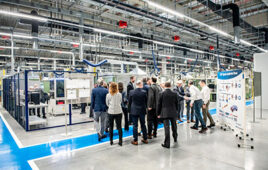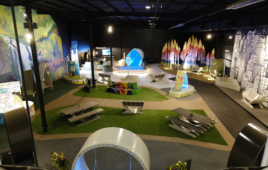Louisville-based Air Hydro Power recently acquired a Sunnen HTA horizontal tube hone to repair and recondition hydraulic cylinders. Adding the honing machine to its repair shop tool lineup allowed the company to bring previously farmed honing work back in-house, helping it regain control of job turnaround times and save the company thousands of dollars in outsourcing costs.
When Air Hydro Power’s Perry Goldstein took over the repair division in 2007, in-house honing capability consisted of hand honing with a half-inch chuck Milwaukee drill.

“Hand honing was physically demanding and a little tricky,” said Goldstein, Air Hydro’s Director of Value Added Services. “If someone accidentally hit the reverse switch while adjusting the hone, the stones would bite the tube and rotate the drill, which is not good if you’re the one standing next to it.” Other factors, such as inability to maintain stone pressure and having to deal with blind bores, relegated Air Hydro’s in-house honing to low-end tasks such as taking out light scratches, deglazing or polishing.
“Correctly honing a tube, maintaining accurate diameter and keeping all the taper out, really difficult to do by hand,” said Goldstein. Therefore, parts requiring more significant material removal had to be sent out at significant cost. Outsourcing also took out some control of meeting delivery dates, putting Air Hydro at the mercy of its honing subcontractors.
Approximately 80% of AHP’s repair work is done on cylinders 8-in. or smaller in diameter, although it has honing stone sets and holders that handle bores up to 18 in.
“Our largest lathe has a three-ft swing and 15-ft bed,” said Goldstein. “But, most of our work is done on our 22-in. swing lathe. The HTA fits perfectly with our other equipment.”

The Sunnen HTA tube honing system handles parts weighing up to 8000 lb with ID ranges from 2.5 to 21 in. and 12-ft part lengths. The HTA is designed for resurfacing and repair work where light-duty stock removal up to 0.030 in. is required.
Air Hydro’s HTA hone also gives the repair shop greater flexibility on how to approach a job, and has saved many cylinders from the scrap heap.
“Having the hone in-house allows us to look at the size and complexity of each job and determine if it’s a repair or a replacement,” said Goldstein. “Prior to the HTA, we’d rub a finger over the tube and determine the material removal to be 0.005 in., which means 0.01 in. off the diameter. That would require us to make a new piston, new seals, etc., and we were better off just making a new tube.”
What AHP discovered, however, is the grooves felt larger than they actually were due to the “finger test” reflecting raised material as well as missing material.
“Now, we put that tube on the HTA, make a few passes and find that, once honed, the tube may be only 0.001 in. or 0.002 in. over tolerance and the seals can easily absorb 0.002 in., so we save the tube.”
Sunnen Products Co.
www.sunnen.com
Air Hydro Power
www.airhydropower.com
::Design World::
Filed Under: Hydraulic equipment + components, Machine tools + subtractive manufacturing, Green engineering • renewable energy • sustainability, Energy management + harvesting





Tell Us What You Think!